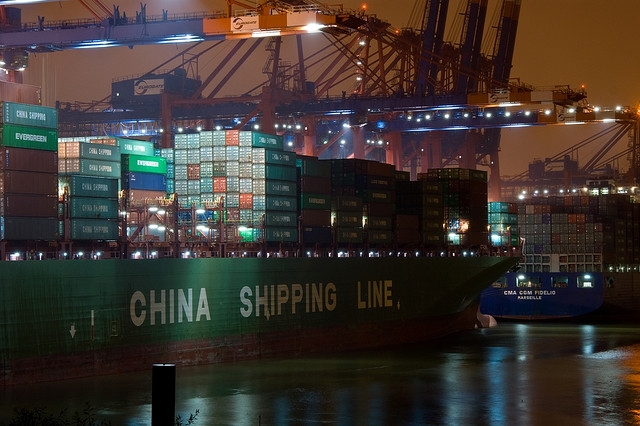
China exports recover strongly in December but data doubts linger
Exports data may have been inflated, says UBS.
Here's more from UBS's China Economic Comment report:
Exports very strong, imports recovering. China's exports grew by 14.1% y/y in USD terms in December, far exceeding expectations (Bloomberg survey average 5%, UBSe 4%). According to our estimate, export volume surged m/m and grew 17% y/y in December as compared with 3.4% in November. The rebound in China’s exports seem to be broad-based, with the exception of exports to Japan, which declined by 7% y/y. Exports to the two largest trading partners, the US and the EU, both rebounded. Exports to the US grew by 10% y/y after a brief decline last month, exports to the EU grew by 2.3% y/y, the first positive growth in a year, and exports to non-Japan Asia also grew strongly. China’s traditional exports did very well, with exports of garments up 16%y/y, footwear up 33% and travel goods up 53% in value term, while exports of electronics and machinery also rebounded strongly.
On the import side, the recent strength in domestic investment and economic activity has led to stronger imports. The dollar value of imports grew by 6% y/y, beating market expectation (3.5%) but fell slightly below ours (8%). Import volume grew by 8.4% y/y in December, but the fall of commodity prices relative to a year earlier led to a slower growth in value. Imports of key commodities such as iron ore and crude oil were strong, with the former increasing by almost 11% y/y in volume. In contrast, imports of copper, machine tools and automobiles declined more sharply in double digits.
As a result of the very strong export performance, trade surplus widened to $31.6 billion in December. For 2012 as a whole, exports grew by 7.9% while imports expanded only 4.3%, weighed down by weaker commodity prices. Helped by the terms of trade gains, China’s trade surplus totaled $231 billion on the customs basis, or $76 billion more than in 2011, even as export growth slowed during the year.
A word of caution on exports. The strength of December exports was surprising and brought some concerns on the quality of the data. For example, growth of container throughput in December did not accelerate as export volume did. Also, there have been quite obvious discrepancy in the growth of China’s exports to Taiwan and Korea and the latter’s reported imports from China in recent months, while historically they track well (Chart 3&4). Perhaps more importantly, exports in bounded areas have grown 66% in the past half year (76% in December), far exceeding growth of overall exports as well as imports in bounded areas. This anomaly has raised some suspicions as to whether some exports have been inflated to take advantage of tax rebates. On the positive side, the US economy has continued to recover and Taiwan’s overall export growth also accelerated to 9% y/y in December, perhaps a verification that general demand for Asian exports have rebounded in the holiday season.
In the coming months, we expect to see trade data distorted by the shift of timing in the Chinese New Year and remind investors to be cautious in interpreting these data. We think January export growth will likely be strong as the CNY fell in January last year with the country shutting down for 7 days, and February exports will be distorted the other way around.
For 2013 as a whole, we expect that the stabilization in global economic growth will also lead to a stable export growth for China, with export value growing by about 8% (same as in 2012). Meanwhile, we expect the rebound in commodity prices, which has been mainly due to the recovery in China’s investment demand, will help to push China’s import growth to 10%. As a result, China is expected to register a decent but smaller trade surplus of 213 billion USD in 2013 (Customs data).
























 Advertise
Advertise






